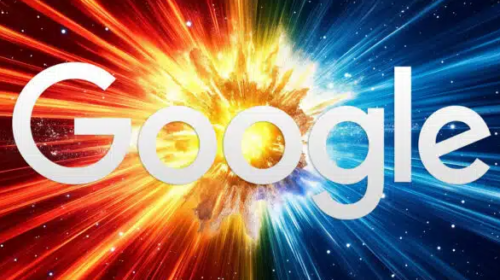What Is Programmatic Advertising? How Does It Work?
Programmatic advertising has been a buzzword in the marketing industry for quite some time. But what does programmatic actually do? And how does it differ from traditional display marketing?
Programmatic advertising is a perfect realm where precision meets automation, and where your ads reach their perfect audience – almost as if by magic.
Gone are the days of casting wide audience nets and hoping for the best returns. In a digitally dynamic world, programmatic stands out as a blend of efficiency and effectiveness.
What Is Programmatic Advertising?
Programmatic advertising uses automated technology and algorithmic tools for media buying. The term programmatic relates to the process of how ads are bought and sold in the advertising space.
Programmatic advertising differs from more traditional media buying methods in its use of automation.
It analyzes many user signals to ensure that ads serve the right person, in the right place, at the right time.
Essentially, it automates the decision-making process of ad placement – without having to manually negotiate prices or placements like other platforms.
This means your ads aren’t just thrown out into the digital void of the internet, hoping your audience will notice.
What’s The Difference Between Programmatic And Display Ads?
It’s easy to confuse display and programmatic ads, especially with the strides that Google has made in its automated and real-time bidding capabilities.
The largest difference between programmatic and display is:
- Programmatic refers to how ads are bought.
- Display refers to the format in which ads appear.
Programmatic advertising, on the other hand, is considered the “behind-the-scenes” expert. It’s the technology-driven process behind the ads that decides which display ads you see, based on a whole host of factors such as:
- Interests.
- Behaviors.
- Demographics.
- Time of day.
- And more.
The second biggest difference between display and programmatic is the ability to buy ads across platforms.
Display ads are more commonly referred to when placing ads within one specific ad network, such as the Google Display Network. Programmatic advertising, on the other hand, takes display media to the next level.
Multiple platforms exist for programmatic, such as sell-side platforms (SSPs) and demand-side platforms (DSPs), allowing advertisers to buy ad inventory across an open network of platforms.
With both programmatic and display, advertisers typically have control over the following:
- Audience.
- Bidding strategy.
- Budget.
- Creative and assets.
- Placements.
Programmatic Advertising Platforms
Automated technology has made significant strides throughout the years.
In the early days, programmatic platforms offered basic automation and targeting capabilities using simple data points.
As the digital landscape grew, so did the complexity and capabilities of these platforms.
These days, programmatic platforms are mostly powered by advanced algorithms, artificial intelligence, and machine learning.
To go even further, there are many types of programmatic platforms available today.
The three main types of platforms are:
- Sell-side platform. Also known as a “supply-side platform,” this platform allows publishers to sell their ad impressions to advertisers in real-time. This platform encompasses both DSPs and ad exchanges. They’re equipped with technology that allows publishers to set minimum prices for their inventory, choose which ads appear on their site, and block ads from certain advertisers – if needed.
- Demand-side platform. This platform allows advertisers to purchase ad inventory across multiple platforms at once. This is where most advertisers fit into this landscape. DSPs enable advertisers to manage their ad inventory bidding and target specific audiences using sophisticated data sources.
- Ad exchanges. This is how SSPs flow their ad inventory to DSPs. DSPs connect to an ad exchanger, where ad prices fluctuate based on the competitiveness of that inventory. Think of the ad exchange as the neutral ground where transactions between SSPs and DSPs occur.
-
Sell-Side Platforms
A comprehensive list of SSPs for publishers includes:
- Google Ad Manager.
- Amazon Publisher Services.
- OpenX.
- SpotX.
- Sovrn.
- TripleLift.
- PubMatic.
- Adform.
- Xandr (Microsoft).
- Index Exchange.
- Magnite.
- Media.net.
- Sharethrough.
- StackAdapt.
Demand-Side Platforms
If you’re a media buyer, this list is for you.
Like SSPs, these company names may ring a bell and offer DSPs.
Some of the top DSPs include:
- Display & Video 360 (Google).
- The Trade Desk.
- Amazon Advertising.
- MediaMath.
- Xandr.
- LiveRamp.
- Adobe Advertising Cloud.
- StackAdapt.
- PubMatic.
- Quantcast.
- AdRoll.
- Simpli.fi.
- RhythmOne.
- Criteo.
- DemandBase.
Some of the larger DSPs for Connected TV and video include:
- Display & Video 360 (Google)
- OneView (Roku).
- MediaMath.
-
How Much Does Programmatic Advertising Cost?
Simply put, programmatic advertising can cost as little or as much as your budget allows.
It’s a common misconception that small businesses can’t benefit from programmatic technologies – but we’re here to correct that.
Programmatic ads are typically bought on a cost-per-thousand-impressions (CPM) basis. This means advertisers pay a set amount for every 1,000 impressions their ad receives.
CPMs typically range between $0.50 and $2.00; however, premium inventory can be upwards of $50 and more.
These prices are based on factors such as:
- Which DSP you chose.
- Your target audience and specificity.
- Ad inventory quality.
- Ad format.
- Bidding strategy.
- The level of competitiveness and demand.
-
What Are The Benefits Of Programmatic Advertising?
There are many benefits to incorporating programmatic advertising into your marketing strategy.
Some of the top benefits include:
- Large-scale audience reach.
- Efficient and low-cost awareness.
- Real-time data and analysis.
- Ability to utilize first-party data.
- Opportunities for cross-device campaign strategies.
Large-Scale Audience Reach
Programmatic is the best way to buy ad inventory to reach the masses due to the abundance of cross-platform inventory.
Advertisers can also quickly adjust their audience strategies to capitalize on what is or isn’t working, ensuring their ads are always optimized.
Not only is it easier to scale your audience, but you can do so much more efficiently
thanks to more precise factors like weather or time of day, coupled with real-time bidding.
Efficient And Low-Cost Awareness
Related to the above benefit of scaling reach, programmatic is one of the most cost-effective types of advertising that exists today.
Earlier, we discussed average CPMs for programmatic averaging between $0.50-$2.00.
Even with a small budget, your marketing dollars can go a long way toward reaching your target audience and increasing awareness of your product or service.
Real-Time Data And Analysis
Because programmatic platforms rely on real-time bidding, advertisers reap the benefit of receiving near real-time data.
Why does this matter?
Real-time data allows for faster decisions and pivots. It also puts you in a proactive rather than reactive mode.
Bids and strategies can be adjusted in real time based on immediate performance or even market conditions, which maximizes the chances of their ads being seen at the right time.
Utilizing First-Party Data
Another benefit of programmatic advertising is the type of data segments available to advertisers.
For example, advertisers can upload owned first-party data in a secure way and target those people directly using real-time bidding signals.
Cross-Device Campaign Strategy
It’s important to note that programmatic advertising is typically seen as an awareness tactic.
Because of this, companies that look solely at last-click success often overlook the true potential of programmatic advertising.
So, how does programmatic fit into a cross-device campaign?
The key is to capture that initial awareness to users through programmatic ads.
That initial awareness touchpoint can be run across multiple channels and formats like:
- Display.
- Video.
- Mobile.
- Social media.
- Out-of-home.
Types Of Programmatic Advertising
There are different types of programmatic advertising.
These should not be confused with the programmatic platforms themselves.
The types of programmatic advertising are simply how an advertiser purchases ad inventory.
The four most common types are:
- Real-time bidding. This type of bidding is open to all advertisers and most common form, where ad auctions happen in real time. This is also known as the “open marketplace.” Because it’s an open marketplace, it is naturally a highly competitive and dynamic space.
- Private marketplace. Also known as PMPs, this bidding happens when
- publishers have invite-only agreements with a limited number of advertisers. These websites typically offer premium pricing because of the coveted ad space. There’s usually limited scale compared to RTB since inventory is restricted to that particular marketplace.
- Preferred deals. Also known as “Spot Buying” or “Non-Guaranteed Premium,” this is a lesser-known type of programmatic advertising. Advertisers choose ad spots before they go on the private or open market. If the advertiser chooses not to buy the inventory, it can then be offered in a PMP or via RTB.
- Programmatic guaranteed. Similar to a preferred deal, but there is no auction bidding. The publisher and advertiser have a direct agreement on a fixed price for ad inventory. It guarantees the advertiser a certain amount of inventory and guarantees the publisher revenue for that inventory.
Programmatic Advertising Examples
Programmatic ads come in all shapes and sizes.
The beauty of using programmatic ads is tailoring the content to your chosen target audience.
A few well-executed programmatic campaigns include:
Amanda Foundation
The Amanda Foundation is a non-profit animal hospital and shelter rescue in the Los Angeles area.
It created a campaign to help at-risk shelter animals find a home during their final days.
Geico Insurance
Geico uses such ad formats as TV commercials, website banner ads, social media ads, and more to create a true cross-platform awareness campaign.
The brand carefully chooses its content based on the platform it serves on, the target audience and demographics, and more.
Progressive Insurance
Progressive created a series of commercials around the portrayal of young homeowners becoming like their parents.
As a homeowner myself, I’ve caught these commercials in the wild on my smart TV and within streaming services like Hulu.
Programmatic Can Ensure That Advertising Budget Is Spent Wisely
The basics and benefits of programmatic advertising can help guide your existing programmatic strategy, or if you’re just getting started, create a new strategy that incorporates programmatic.
The evolution of programmatic platforms, with their sophisticated algorithms and data-driven strategies, has empowered advertisers to deliver their messages to the right people, in the right context, and with precision that was once only dreamed of.
The precision of programmatic advertising, married with efficiency and scalability, ensures that advertising dollars are being spent wisely, maximizing return on investment and driving meaningful engagement.




